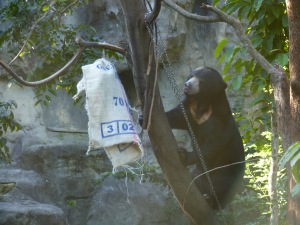You’ve probably seen it at the zoo: balls on chains for elephants, bears on a treasure hunt for food, or big cats sniffing marmite. This is environmental enrichment. It provides mental stimulation to captive animals and can prevent stereotypical behaviours linked to poor mental health like elephants swaying or big cats pacing. Public support for enrichment is good enough for San Francisco Zoo to crowd fund a rhino toy.

If we care enough about zoo animals to enrich their environment, why wouldn’t we do the same for farm animals? Pigs and chickens in particular tend to be farmed intensively indoors, either in individual cages or in groups in sheds. Free range farms are less common. How does this affect the welfare of the animals we eat? Do farm animals, like many zoo animals, get bored and express their frustration in stereotyped behaviours? And would they too respond to environmental enrichment? Read More »